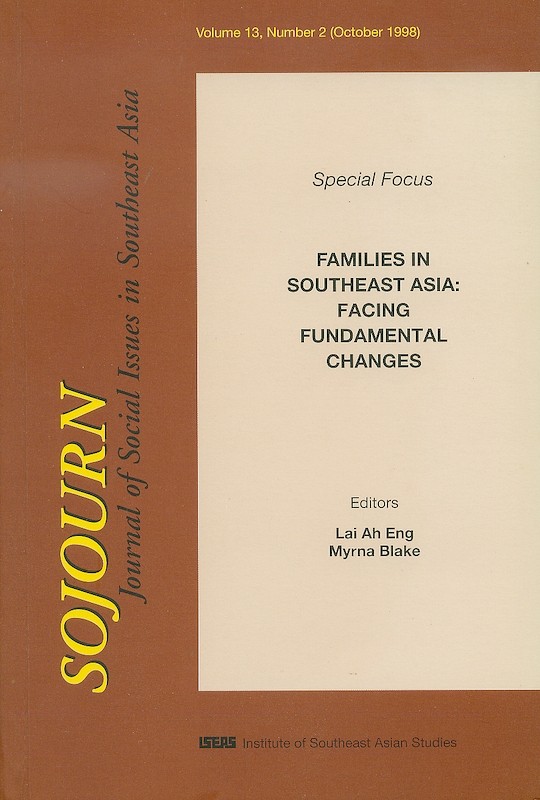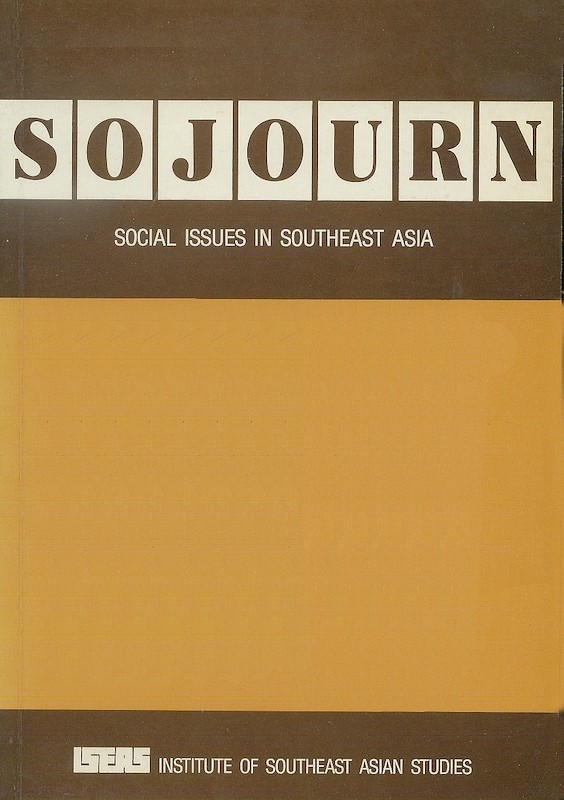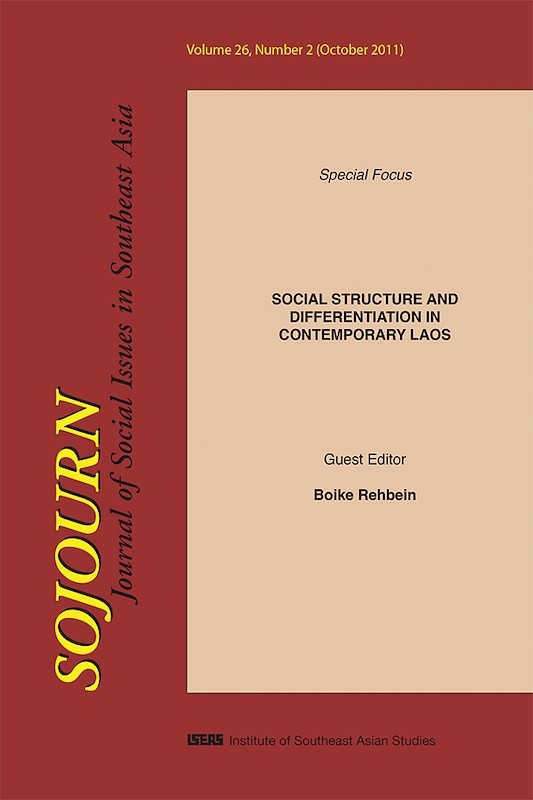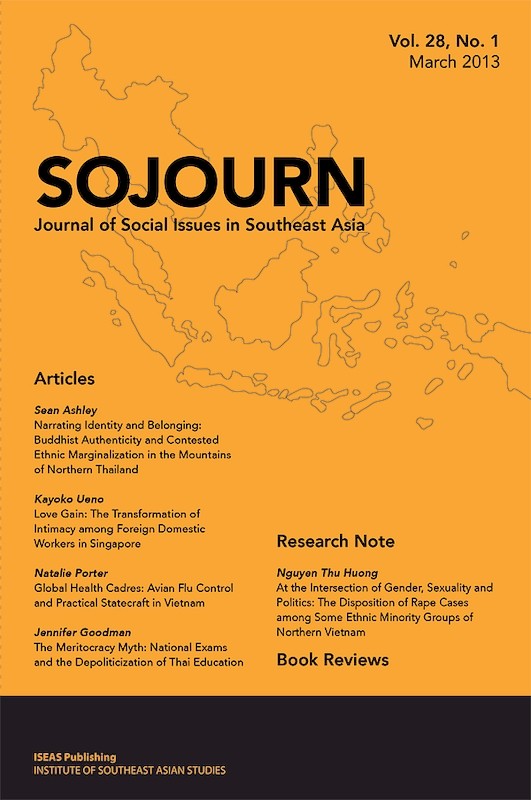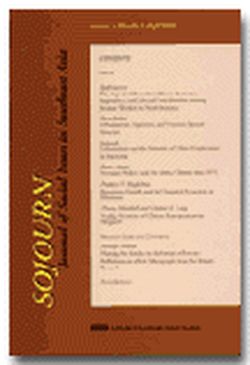SOJOURN: Journal of Social Issues in Southeast Asia Vol. 5/2 (Aug 1990)
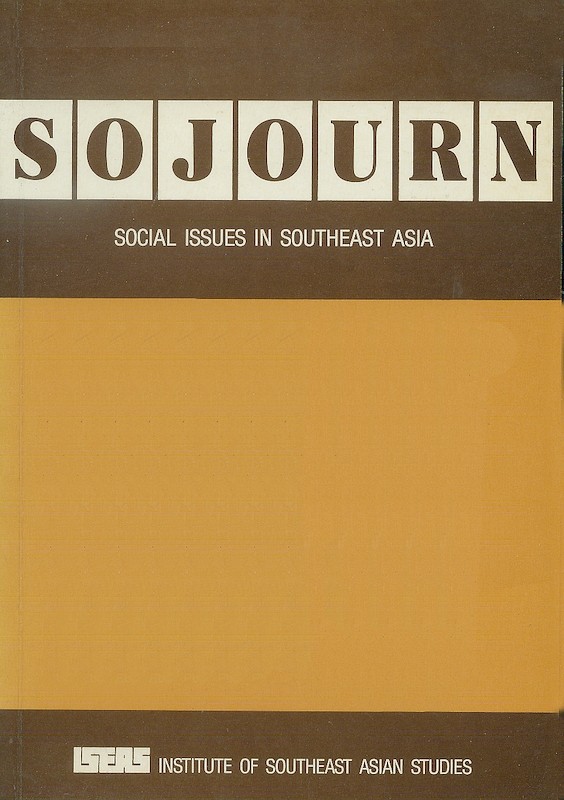
Date of publication:
August 1990
Publisher:
Institute of Southeast Asian Studies
Number of pages:
196
Code:
SJ5/2
Contents
-
Preliminary pages
- ARTICLES
-
Changing Patterns of Marriage and Household Formation in Peninsular Malaysia, by Tan Poo Chang, Gavin W Jones, authors see abstractBased on surveys conducted among different ethnic groups in rural and urban settings in peninsular Malaysia in 1981-82, this paper analyses changes in patterns of marriage and household formation among Malays, Chinese, and Indians Aspects covered include social mixing before marriage, choice of spouse, comparison of spouses characteristics, and place of residence after marriage. There are important cultural differences between the main Malaysian ethnic groups in matters related to marriage, but in many important respects, attitudes and practice are tending to converge somewhat. For each ethnic group, however, the timing of marriage still differs. Education is clearly a major influence, but other factors such as degree of freedom in the choice of spouse, age of spouses at the time of marriage, and the prospective place of residence after marriage also have an independent influence.
-
Occupational and Spatial Mobility in an Overseas Chinese Agricultural Community: The Hakkas of Kudat, Sabah, Malaysia, by R D Hill, Voo Min Shin, authors see abstractMany Hakka communities in Southeast Asia were, and some remain, mainly agricultural This paper, based mainly upon genealogies collected in the field, traces the manner in which a small community, at first almost entirely agricultural, has become occupationally diversified Hakkas of Kudat origin, probably in part because of the emphasis on education, especially in English, for both men and women, now have an occupational profile strongly weighted towards services and the professions. Occupational mobility has been accompanied by substantial change in predominant place of residence, reflecting not only the continuance of Kudat as a largely agricultural district in which there was, and still is, limited scope for upward occupational mobility, but also the apparent attractions of places outside the district and the state. Furthermore, anecdotal evidence suggests that international chain migration in the group may be commencing.
-
International Muslim Networks and Islam in Singapore, by Petra Weyland, author see abstractGlobal economic integration is invariably accompanied by the transmission of ideas, values, and ideologies. This is also true in the internationalization of religious movements and the development of the All-Malayan Muslim Missionary Society, popularly known as Jamiyah, and its changing role in a rapidly modernizing Singapore demonstrates this clearly. This article traces the growth of Jamiyah from its foundation by a highly charismatic leader and patron into a sophisticated religious body, with "modern party-like organizational forms", employing rationalized methods in the dissemination of ideas and knowledge. This transformation not only parallels the development of international Muslim networks which have been supported by Saudi Arabian organizations but, indeed, has to a large extent been dependent on these linkages.
-
The Thai Government and Islamic Institutions in the Four Southern Muslim Provinces of Thailand, by W K Che Man, author see abstractThis paper examines the nature of existing Islamic institutions in the four Muslim provinces of Thailand. It focuses on the integration policies formulated by the government to transform these Islamic institutions after the region was incorporated into the Thai state. It also discusses the consequences and Malay-Muslim responses to the transformation and to integration measures in general.
- RESEARCH NOTES AND COMMENTS
-
Individual Soul, National Identity: The Baci-Sou Khuan of the Lao, by Mayoury Ngaosyvathn, author see abstractThe Lao, as with other Tai-speaking peoples, believe in souls (khuan) which need to be integrated with the body to ensure the well-being of the individual. A ritual called the baci or sou khuan is widely performed to achieve this. This paper reviews the literature on beliefs associated with the ritual and its variations and touches on recent changes in the ritual in Laos today. It is argued that the ritual is an integral part of Lao culture and is, in many respects, important to Lao conceptualizations of identity.
-
Orientalism, Commensurability, and the Construction of Identity: A Comment on the Notion of Lao Identity, by Ananda Rajah, author see abstractThe notion of a Lao identity is often taken for granted. It is argued that Lao ethnic and national identity are historically constituted and may also be seen as products of the merging of legendary, historical, political and, indeed, scholarly discourses. It is, in other words, a "construction" and this paper seeks to examine some of the sociological and anthropological issues, conceptual and methodological, relevant to the construction of Lao identity.
- BOOK REVIEWS
-
BOOK REVIEW: In Search of Southeast Asia: A Modern History. Edited by David Joel Steinberg., by Chandran Jeshurun, author
-
BOOK REVIEW: Agrarian Transformation: Local Processes and the State in Southeast Asia. Edited by Gillian Hart, Andrew Turton, and Benjamin White, with Brian Fegan and Lim Teck Ghee., by Tilak K Doshi, author
-
BOOK REVIEW: Press Systems in ASEAN States. Edited by Achal Mehra., by Russell Hiang-Khng Heng, author
- CONFERENCES, WORKSHOPS, AND SEMINARS
-
International Conference on Migration, 7-9 February 1991, Singapore: Call for Papers
-
Index to SOJOURN: Social issues in Southeast Asia, vol. 5 (1990)

